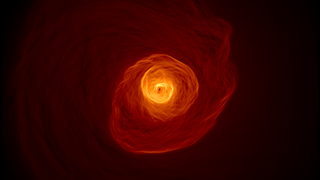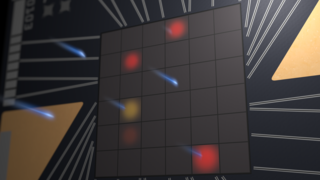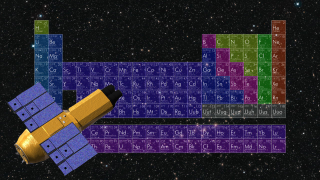Universe
ID: 12587
Combining data from NASA's Chandra X-ray Observatory with radio observations and computer simulations, an international team of scientists has discovered a vast wave of hot gas in the nearby Perseus galaxy cluster. Spanning some 200,000 light-years, the wave is about twice the size of our own Milky Way galaxy.
The researchers say the wave formed billions of years ago, after a small galaxy cluster grazed Perseus and caused its vast supply of gas to slosh around an enormous volume of space.
Galaxy clusters are the largest structures bound by gravity in the universe today. Some 11 million light-years across and located about 240 million light-years away, the Perseus galaxy cluster is named for its host constellation. Like all galaxy clusters, most of its observable matter takes the form of a pervasive gas averaging tens of millions of degrees, so hot it only glows in X-rays.
Chandra observations have revealed a variety of structures in this gas, from vast bubbles blown by the supermassive black hole in the cluster's central galaxy, NGC 1275, to an enigmatic concave feature known as the "bay."
To investigate the bay, researchers combined a total of 10.4 days of high-resolution data with 5.8 days of wide-field observations at energies between 700 and 7,000 electron volts. For comparison, visible light has energies between about two and three electron volts. The scientists then filtered the Chandra data to highlight the edges of structures and reveal subtle details. Next, they compared the edge-enhanced Perseus image to computer simulations of merging galaxy clusters run on the Pleiades supercomputer at NASA's Ames Research Center.
One simulation seemed to explain the formation of the bay. In it, gas in a large cluster similar to Perseus has settled into two components, a "cold" central region with temperatures around 54 million degrees Fahrenheit (30 million Celsius) and a surrounding zone where the gas is three times hotter. Then a small galaxy cluster containing about a thousand times the mass of the Milky Way skirts the larger cluster, missing its center by around 650,000 light-years.
The flyby creates a gravitational disturbance that churns up the gas like cream stirred into coffee, creating an expanding spiral of cold gas. After about 2.5 billion years, when the gas has risen nearly 500,000 light-years from the center, vast waves form and roll at its periphery for hundreds of millions of years before dissipating.
These waves are giant versions of Kelvin-Helmholtz waves, which show up wherever there's a velocity difference across the interface of two fluids, such as wind blowing over water. They can be found in the ocean, in cloud formations on Earth and other planets, in plasma near Earth, and even on the sun.
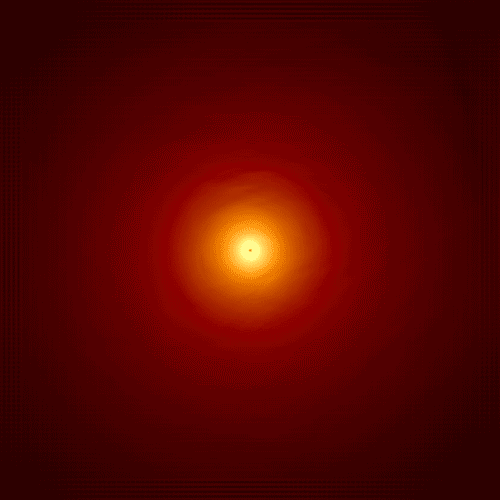
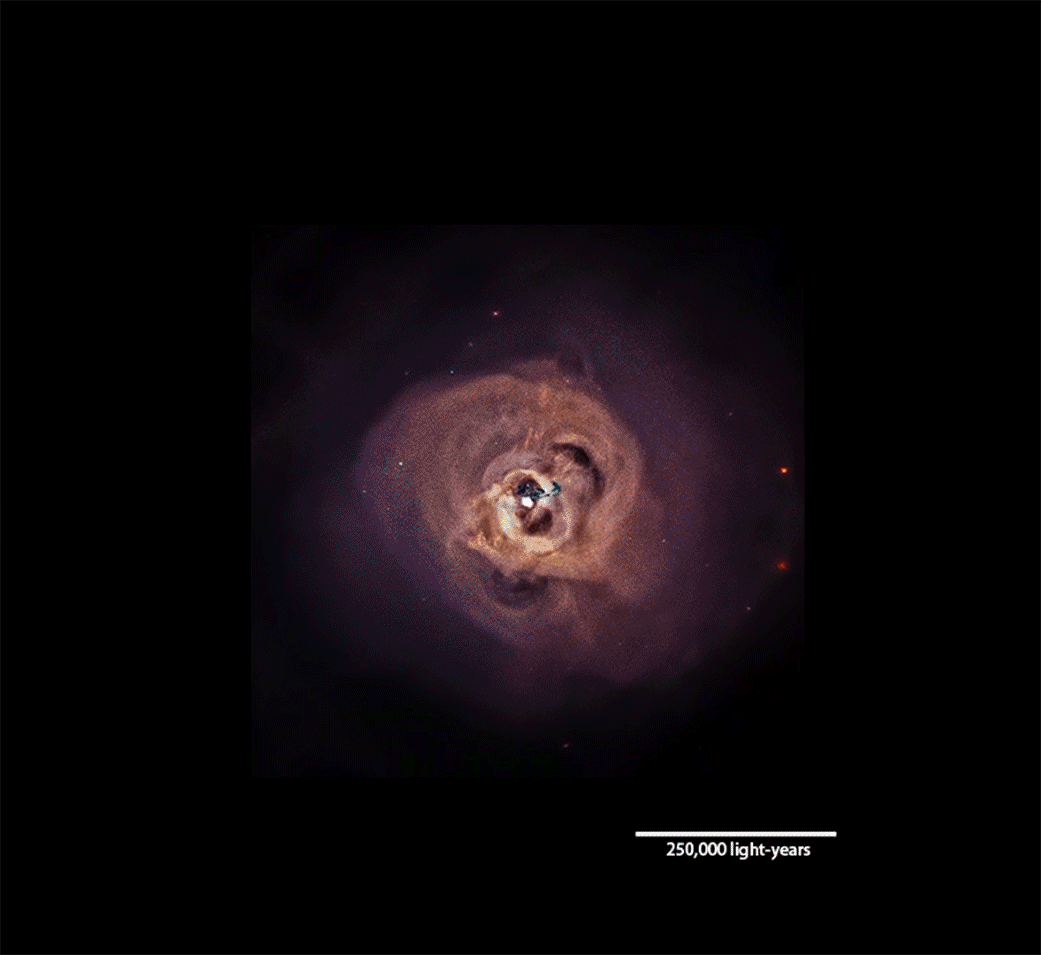
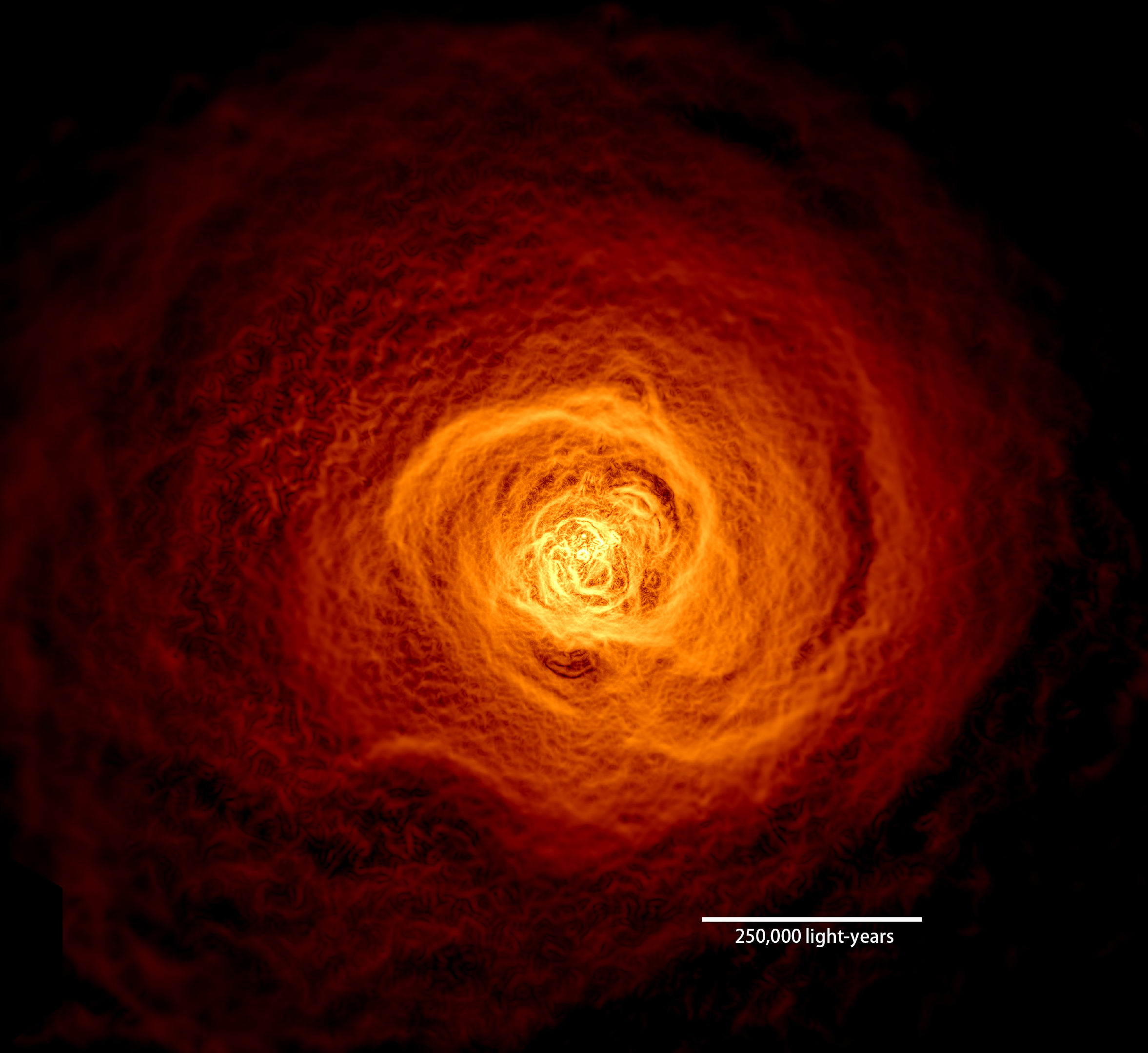
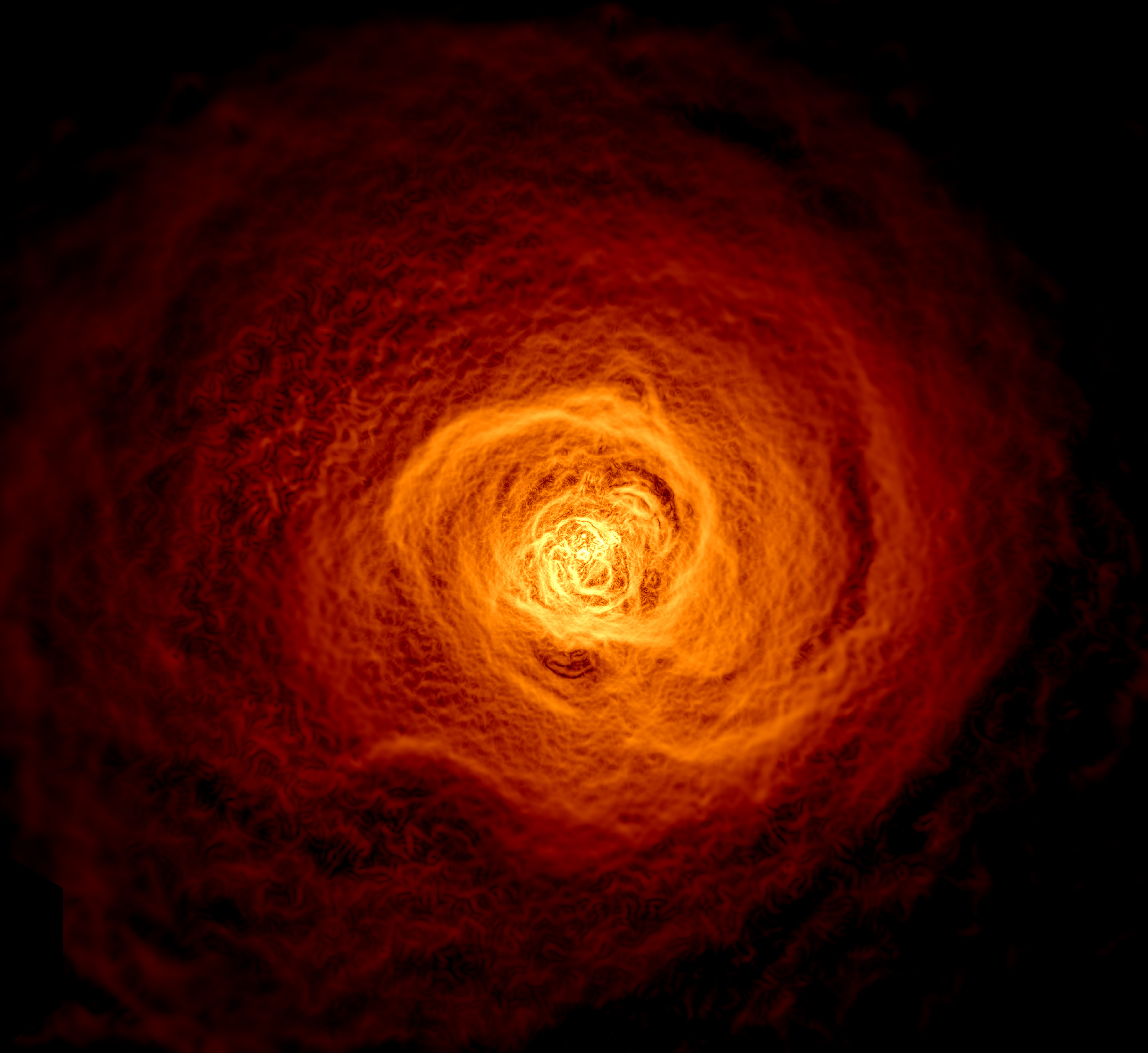
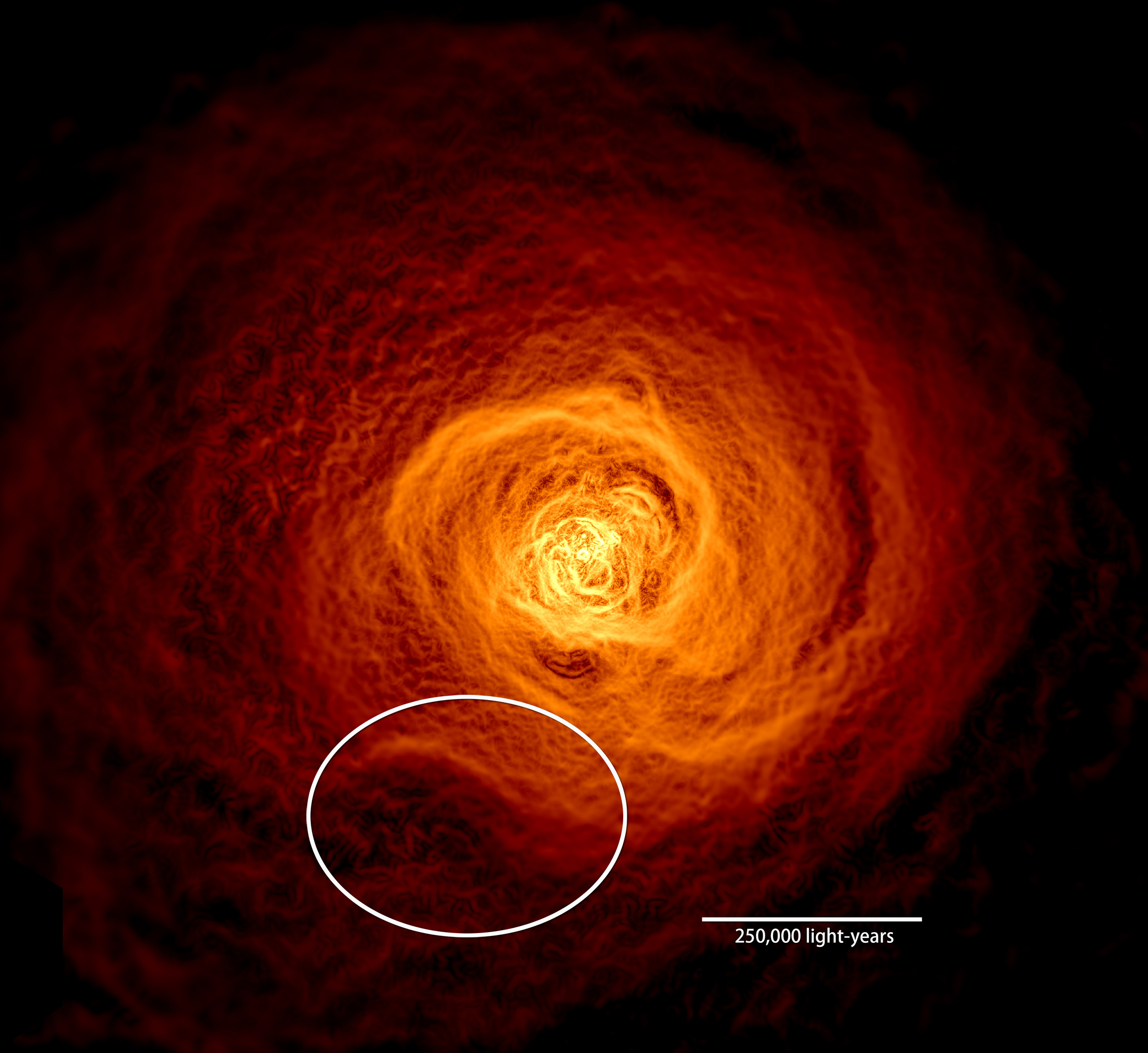
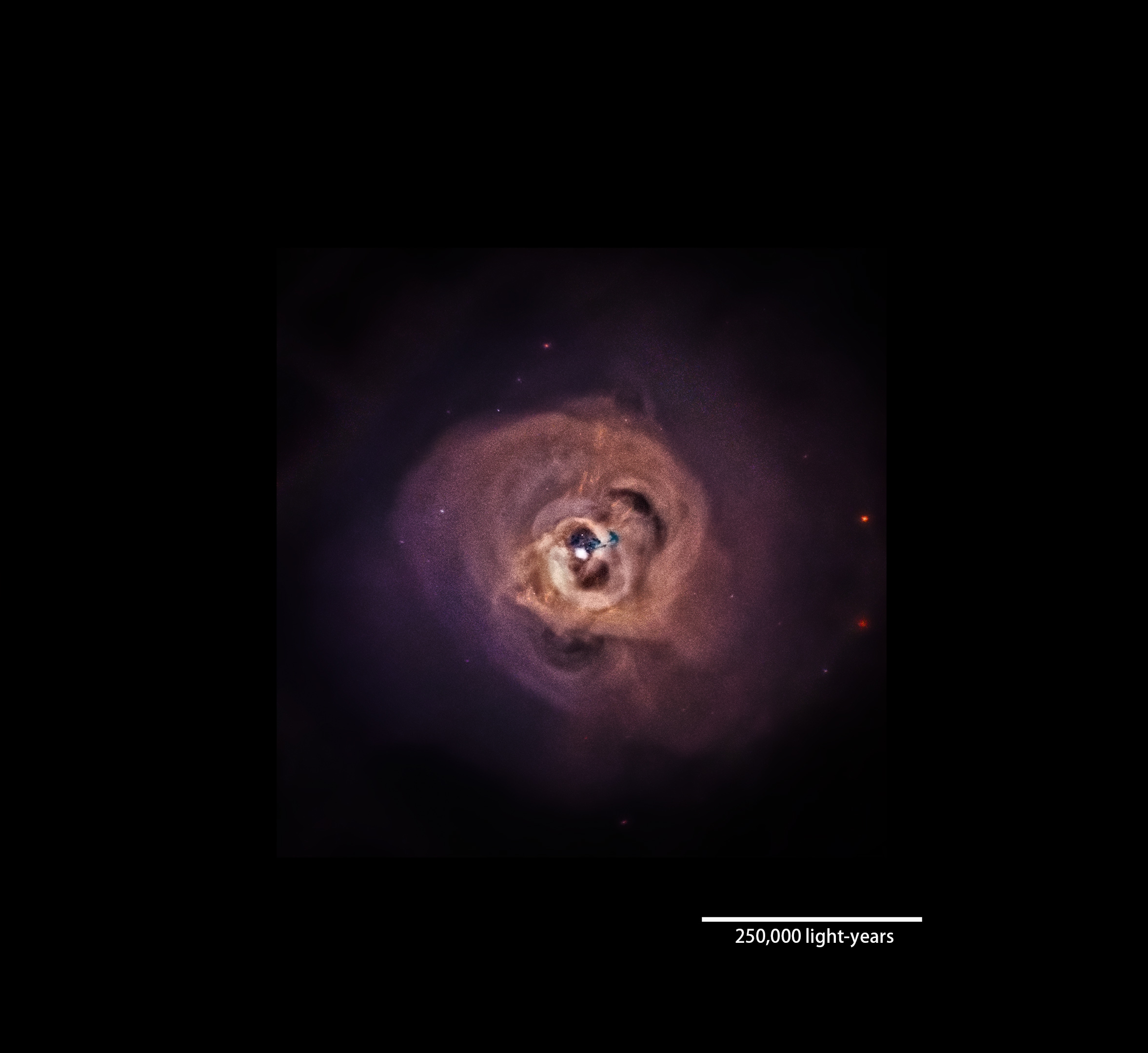
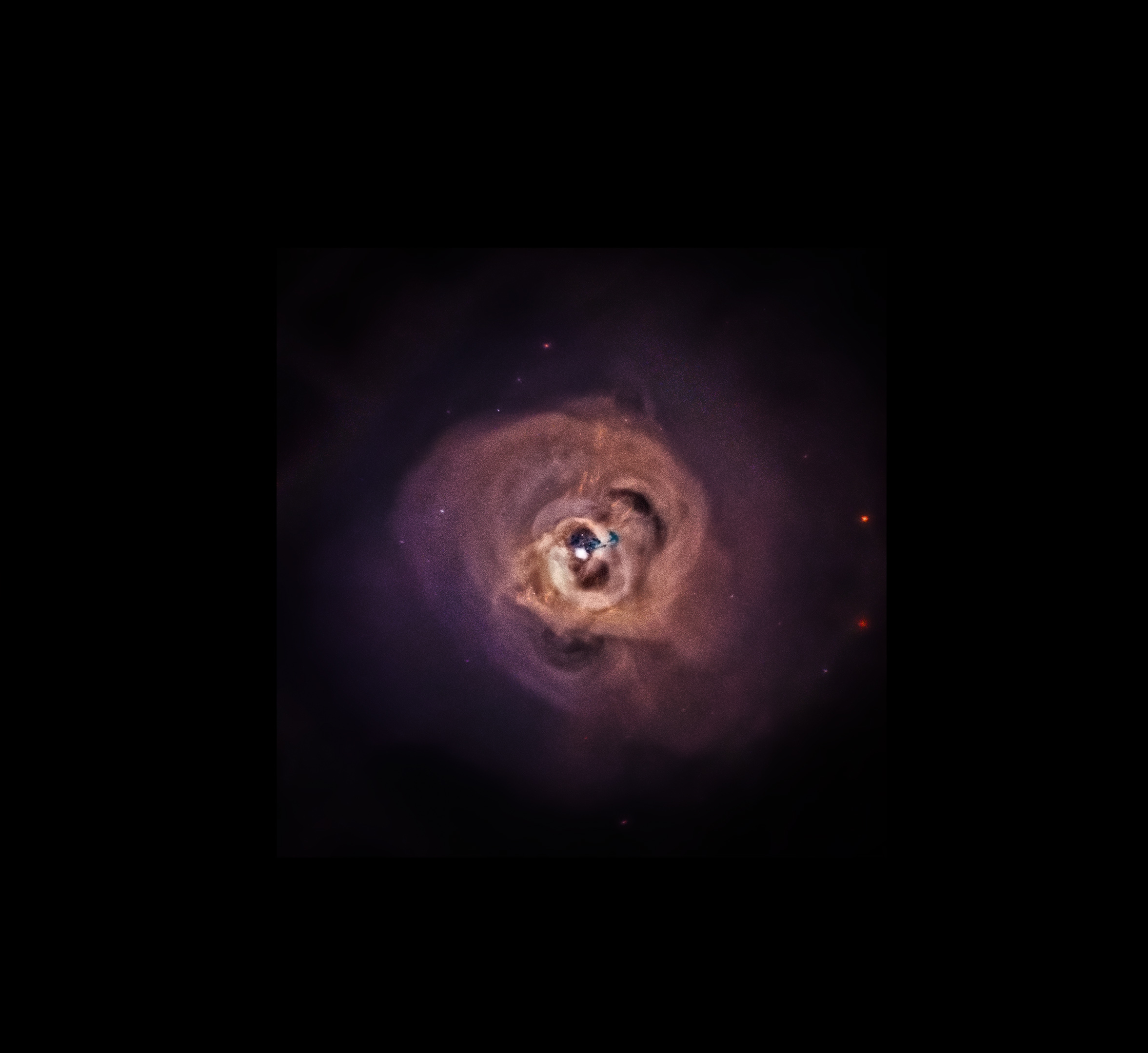
Gigantic Wave Discovered in Perseus Galaxy Cluster
The researchers say the wave formed billions of years ago, after a small galaxy cluster grazed Perseus and caused its vast supply of gas to slosh around an enormous volume of space.
Galaxy clusters are the largest structures bound by gravity in the universe today. Some 11 million light-years across and located about 240 million light-years away, the Perseus galaxy cluster is named for its host constellation. Like all galaxy clusters, most of its observable matter takes the form of a pervasive gas averaging tens of millions of degrees, so hot it only glows in X-rays.
Chandra observations have revealed a variety of structures in this gas, from vast bubbles blown by the supermassive black hole in the cluster's central galaxy, NGC 1275, to an enigmatic concave feature known as the "bay."
To investigate the bay, researchers combined a total of 10.4 days of high-resolution data with 5.8 days of wide-field observations at energies between 700 and 7,000 electron volts. For comparison, visible light has energies between about two and three electron volts. The scientists then filtered the Chandra data to highlight the edges of structures and reveal subtle details. Next, they compared the edge-enhanced Perseus image to computer simulations of merging galaxy clusters run on the Pleiades supercomputer at NASA's Ames Research Center.
One simulation seemed to explain the formation of the bay. In it, gas in a large cluster similar to Perseus has settled into two components, a "cold" central region with temperatures around 54 million degrees Fahrenheit (30 million Celsius) and a surrounding zone where the gas is three times hotter. Then a small galaxy cluster containing about a thousand times the mass of the Milky Way skirts the larger cluster, missing its center by around 650,000 light-years.
The flyby creates a gravitational disturbance that churns up the gas like cream stirred into coffee, creating an expanding spiral of cold gas. After about 2.5 billion years, when the gas has risen nearly 500,000 light-years from the center, vast waves form and roll at its periphery for hundreds of millions of years before dissipating.
These waves are giant versions of Kelvin-Helmholtz waves, which show up wherever there's a velocity difference across the interface of two fluids, such as wind blowing over water. They can be found in the ocean, in cloud formations on Earth and other planets, in plasma near Earth, and even on the sun.







Used Elsewhere In
Related
For More Information
Credits
Scott Wiessinger (USRA): Lead Producer
Francis Reddy (Syneren Technologies): Lead Science Writer
Stephen A. Walker (USRA): Scientist
John ZuHone (Harvard-Smithsonian Center for Astrophysics): Visualizer
Francis Reddy (University of Maryland College Park): Graphics
Francis Reddy (Syneren Technologies): Lead Science Writer
Stephen A. Walker (USRA): Scientist
John ZuHone (Harvard-Smithsonian Center for Astrophysics): Visualizer
Francis Reddy (University of Maryland College Park): Graphics
Please give credit for this item to:
NASA's Goddard Space Flight Center. However, individual items should be credited as indicated above.
NASA's Goddard Space Flight Center. However, individual items should be credited as indicated above.
Short URL to share this page:
https://svs.gsfc.nasa.gov/12587
Mission:
Chandra X-Ray Observatory
This item is part of these series:
Narrated Movies
Astrophysics Simulations
Astrophysics Stills
Astrophysics Features
Keywords:
SVS >> Galaxy
SVS >> Gas
SVS >> HDTV
SVS >> Music
SVS >> Simulation
SVS >> X-ray
SVS >> Hyperwall
SVS >> Astrophysics
SVS >> Edited Feature
SVS >> Space
SVS >> Supercomputer
NASA Science >> Universe
SVS >> Chandra
SVS >> 4K
https://svs.gsfc.nasa.gov/12587
Mission:
Chandra X-Ray Observatory
This item is part of these series:
Narrated Movies
Astrophysics Simulations
Astrophysics Stills
Astrophysics Features
Keywords:
SVS >> Galaxy
SVS >> Gas
SVS >> HDTV
SVS >> Music
SVS >> Simulation
SVS >> X-ray
SVS >> Hyperwall
SVS >> Astrophysics
SVS >> Edited Feature
SVS >> Space
SVS >> Supercomputer
NASA Science >> Universe
SVS >> Chandra
SVS >> 4K
